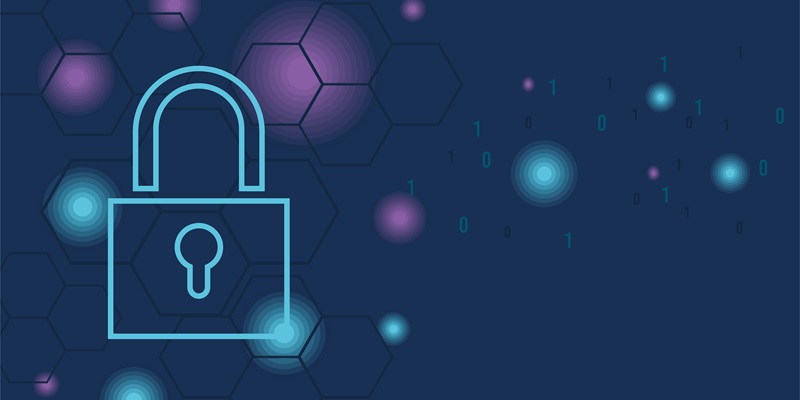In the ever-evolving landscape of the digital age, where data is the new currency and cyber threats loom large, the integration of blockchain and cybersecurity emerges as a powerful and timely alliance. Traditional cybersecurity measures, while effective to a certain extent, often fall short in addressing the evolving tactics of cyber attackers. This article explores the benefits of integrating blockchain technology into cybersecurity protocols, highlighting its potential to provide enhanced protection for digital assets.
The Limitations of Traditional Cybersecurity Measures
Today’s cyber threats are becoming increasingly sophisticated, and traditional cybersecurity measures struggle to keep pace. Attackers employ innovative techniques to breach systems, exploiting vulnerabilities in firewalls, antivirus software, and other security tools. The limitations of traditional approaches necessitate a new paradigm, prompting organizations to turn to blockchain technology.
The Tamper-Resistant Nature of Blockchain
At the core of blockchain’s security lies its tamper-resistant nature. Once information is added to the ledger, it becomes practically impossible to alter or manipulate. Blockchain’s decentralization and consensus mechanisms ensure that transactions are validated and recorded in a transparent and immutable manner. This inherent immutability adds an extra layer of security, preventing unauthorized modifications to sensitive data.
Integrating blockchain into cybersecurity protocols
By integrating blockchain’s cryptographic principles into cybersecurity protocols, organizations can establish an additional layer of protection for their digital assets. The use of public and private key cryptography, combined with distributed ledger technology, enhances authentication and verification processes, making it extremely challenging for attackers to manipulate or forge data. This integration can also help fortify access controls and ensure the privacy of sensitive information.
Enhanced Identity Management
Blockchain’s decentralized model provides a more secure approach to identity management. Unlike traditional systems that rely on centralized servers vulnerable to single points of failure and data breaches, blockchain networks distribute user identity data across multiple nodes. This decentralized architecture reduces the risk of cybercriminals compromising a single entity to gain unauthorized access to critical systems or steal sensitive information.
Eliminating Single Points of Failure
In contrast to traditional cybersecurity approaches, blockchain’s decentralized architecture eliminates the vulnerability of a single point of failure. Traditional systems rely on centralized servers and databases, which, if breached, can have catastrophic consequences. Blockchain’s distributed ledger, spanning multiple nodes, ensures that even if one node is compromised, the integrity and availability of data remain intact, making it resilient against cyberattacks.
The Power of Smart Contracts
Smart contracts, a key feature of blockchain, are self-executing contracts with predefined rules written into code. These contracts automate the execution and enforcement of agreements, reducing reliance on intermediaries. In the realm of cybersecurity, smart contracts can enhance security by automating security protocols and executing predefined actions based on predetermined conditions. This automation minimizes the risk of human error and ensures consistent and secure operations.
Leveraging Transparency in Cybersecurity
Transparency can be leveraged in cybersecurity to enhance auditing and monitoring capabilities. Blockchain’s transparent nature allows authorized parties to view and verify the history of transactions, making it easier to detect anomalies or unauthorized activities. The ability to trace every transaction back to its origin ensures accountability and facilitates prompt action in the event of a security breach.
Blockchain as an Asset in Forensic Investigations
The immutability of blockchain records makes it an invaluable asset in forensic investigations following a cybersecurity incident. Blockchain’s tamper-proof nature provides an irrefutable source of truth, enabling investigators to trace the flow of compromised data, identify the points of intrusion, and uncover the responsible parties. This facilitates more efficient and effective forensic analysis, aiding in the prevention of future attacks.
Challenges and the way forward
Integrating blockchain and cybersecurity does come with its own set of challenges. The technology is still evolving, and its scalability and performance needs to be addressed for widespread adoption. Additionally, regulatory frameworks and standards must be developed to ensure interoperability and adherence to legal requirements. Overcoming these challenges requires a strategic approach, collaboration between industry stakeholders, and a commitment to staying abreast of technological advancements.
In the digital age, the integration of blockchain and cybersecurity is essential to combat the evolving threats posed by cyber attackers. Blockchain’s tamper-resistant nature, decentralized architecture, and smart contract capabilities offer enhanced protection for digital assets, improved identity management, and increased transparency and accountability. Organizations must recognize the potential of this powerful alliance and take proactive steps to integrate blockchain technology into their cybersecurity protocols. By doing so, they can fortify their defenses against cyber threats and secure the digital landscape for a more resilient future.

